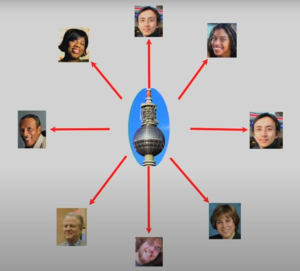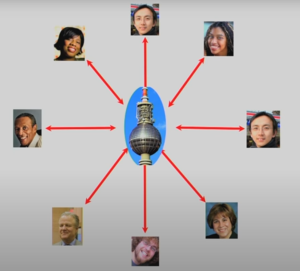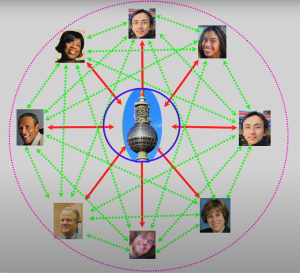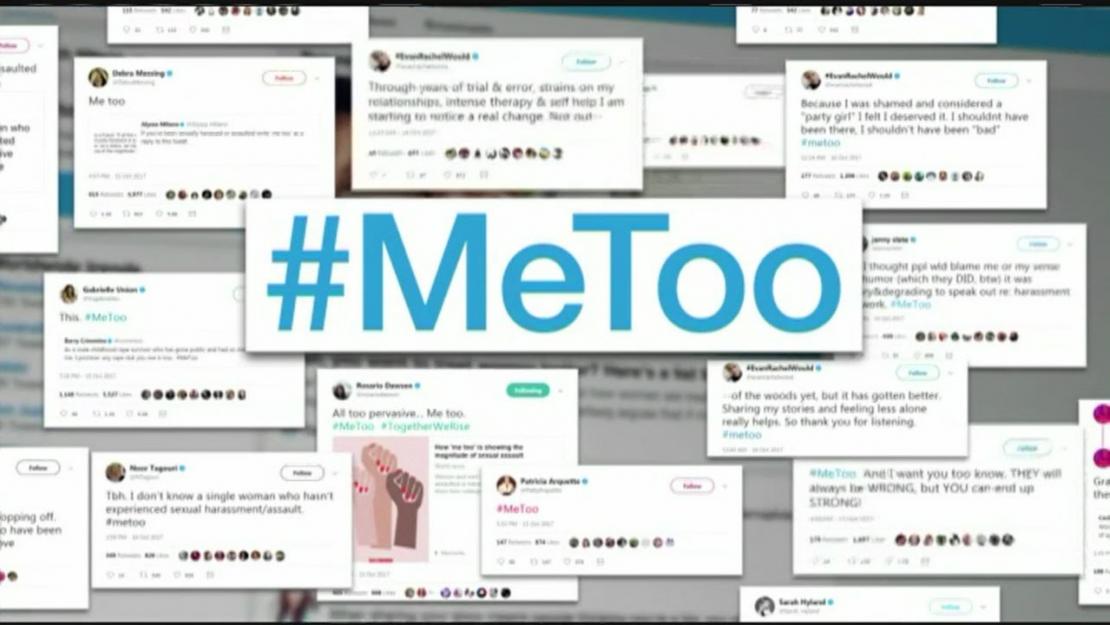Key Terms: Passive consumption, participatory interaction, linear distribution, decentralised distribution, democratisation, cognitive surplus, mass amateurisation.
The End of Audience
Clay Shirky makes the point that the audience has changed from a mode of passive consumption to one of participatory interaction.



In a traditional media environment (Fig 1) the logic is, ‘Filter then publish.’ Filters such as…
- Should we cover this story (Journalistic News Values)?
- Should we publish this music?
- Should we green light this movie?
- Should we pay this author an advance?
In the new media environment (Fig 3) the logic is, ‘Publish then filter,’ and as Shirky puts it, ‘Let anyone say anything and then sort the signal from the noise.’ He goes on to point out that not only is there a new way to reach the audience, but that we need to radically rethink, ‘…what the audience, is and thinks and does.’
Cognitive Surplus.
 Shirky also observed that this democratisation of production and distribution gives the audience the ability to, ‘Pool their time and talent,’ to create their own content and furthermore gives them the power to change the agenda. Think about crowd driven issues that have started with online groups coming together to protest against issues in society, such as, #metoo, Black Lives Matter, Extinction Rebellion…
Shirky also observed that this democratisation of production and distribution gives the audience the ability to, ‘Pool their time and talent,’ to create their own content and furthermore gives them the power to change the agenda. Think about crowd driven issues that have started with online groups coming together to protest against issues in society, such as, #metoo, Black Lives Matter, Extinction Rebellion…
Mass Amateurisation
We’re all journalists and media distributors now!
You all have the power via your phones to record multimedia (video, audio & copy (the written word)). You can also use cheap apps to edit your media and shape the representations you wish to communicate. You all have a social media platform on which you can distribute your content and this platform will also allow other to react and interact with your content. Put simply, through new media technologies the audience has taken the power away from traditional media industries and influencers.
So What?
The 20th century audience model is dead. We can no longer consider the audience to be passive consumers of the media, but interactive prosumers. The media ecology is now a participatory & democratised environment in which audiences expect their voices to be heard and in which they are no longer willing to take, at face value, the messages and ideas coming out of mainstream media outlets, which have their roots in the last century.
You might think that this has not only given power to the audience, but has also led to the fragmentation of society and the rise of identity politics (for better or worse). Has this democratisation of the media given us a more tolerant and democratic society or led to more entrenched politics & division?
Discussion: Does this mean that the old ways of considering audiences in terms of their demographics and psychographics is redundant? Should we stop thinking about age, gender, socio-economic groups (A,B,C1,C2,D,E), ethnicity, geographic location… and start thinking about the audience as connected communities of individuals, who not only wish to consume media, but also demand the right to like, comment and share their ideas. Does this therefore mean that mainstream ideologies are increasingly redundant?
What Exam / Essay can I use this in?

Glossary:
- Passive consumption – Consuming media without thinking or questioning your assumptions.
- Participatory interaction – The audiences’ active engagement with the media, cultural competence and pro /consumption.
- Linear distribution – One way communication from media industry to audiences.
- Decentralised distribution – Dispersed distribution (aka, The Internet and The Web)
- Democratisation – Taking power from producers and giving it to audiences (…superficially a good thing.)
- Cognitive surplus – The collective power to share, redistribute, edit, share, redistribute… of crowds.
- Mass amateurisation – We’re all journalists now.
KEY QUOTES – IN A NUTSHELL
“Our social tools are not an improvement to modern society, they are a challenge to it.”
“The future presented by the internet is the mass amateurization of publishing and a switch from ‘Why publish this?’ to ‘Why not?”
“[N]ew technology enables new kinds of group-forming.”